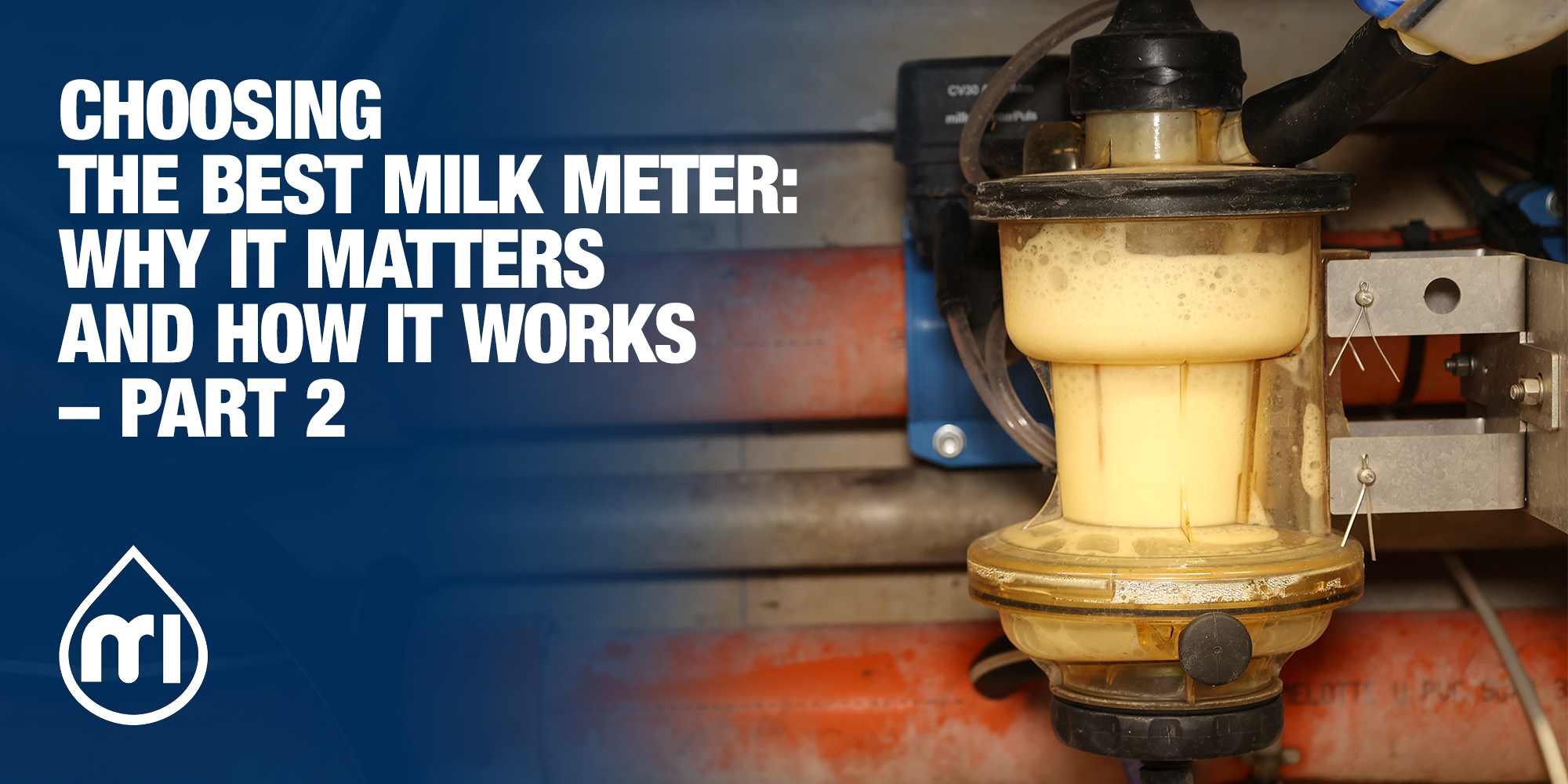
Choosing the best milk meter: why It matters and how it works – Part 2
Once having demonstrated the potential benefits of milk meters, let’s discover how they work and how to recognize the best products for your herd.
After our introduction on the possible features a milk meter can have, and why it can be the right choice to optimize your milking efficiency, in this episode not only are we going to discover how this tool works, but we will also share some aspects to consider, when selecting the milk meter for your parlour.
To provide you with the most reliable content, once again we count on Simone Pezzi’s support, our Global Product & Key Account Manager.
“Fill & Dump” technology milk meters
In this episode we will focus on the “Fill & Dump” technology. As the name itself suggests, this tool is composed by one or more chambers containing a level sensor. As the milk enters, the sensor recognizes a certain amount of milk, allowing to understand how much milk flows.
Once the second level is reached, the dump valve opens and the vacuum beneath it enables the milk to flow towards the milk line.
Being located between animal and milk line, the milk meter might affect vacuum stability, if not properly managed. In fact, it could slow down the milking, while representing a danger for the teat ends, causing issues to both the process and the animal. Therefore, a crucial aspect to consider when selecting the product is making sure it maintains vacuum stability beneath the udder, allowing the milk to flow from the udder to the milk line, without ever hindering the flow or respraying to the teat.
In case the milk meter measures conductivity and temperatures, two tiny sensors then register the two values from the milk between the first and second level.
On the panel’s display it will be possible to keep track of the milking performance, through the milk production indicators.
To maximise the potential of measuring milk flow, the connection to a Herd Management Software plays a key role, as it allows to store and monitor all the data related to each animal, evaluating the performance of each KPI. This insight provides then an overview of the milking routine’s efficiency, allows to detect any abnormality during the process, and to develop a suitable strategy for the needs of each cow, maximising the profitability of the farm.
Maintenance is a further aspect not to underestimate. Therefore, make sure to follow the routine suggested by the system’s manufacturer, to get the most out of your milk meter.
What are the most reliable milk meters?
We are sure you only want the best equipment for your herd, therefore when choosing the right milk meter, we suggest you consider two main aspects:
Certified products, awarded by institutions that carefully evaluate the performance of milk meters, analysing their impact on the milk flowing in it.
Among these, ICAR certification is an excellent example. Through sampling examination, it demonstrates that products have a margin of error <2%, and thus the milk meter has no impact either on the properties of milk, or on cows’ health, preserving the quality of milk.
Equipment from high-quality brands on the market. In fact, these products receive a Quality Certificate, ensuring they comply with milk flow, fluid dynamics and animals’ well-being parameters.
While closing this series of Blog episodes about milk meters, we hope it has contributed to proof that they are the right tool to choose, to be aware of your herd’s performance, optimize your milking routine, and spot any issue in advance. These elements all lead up to milking efficiency, and isn’t it what you are looking for?
Once again, MI thank Simone Pezzi for the support.
Sources:
It’s all in the flow Sipka, Wieland, Geary – Hoard’s Dairyman, 10/2021
